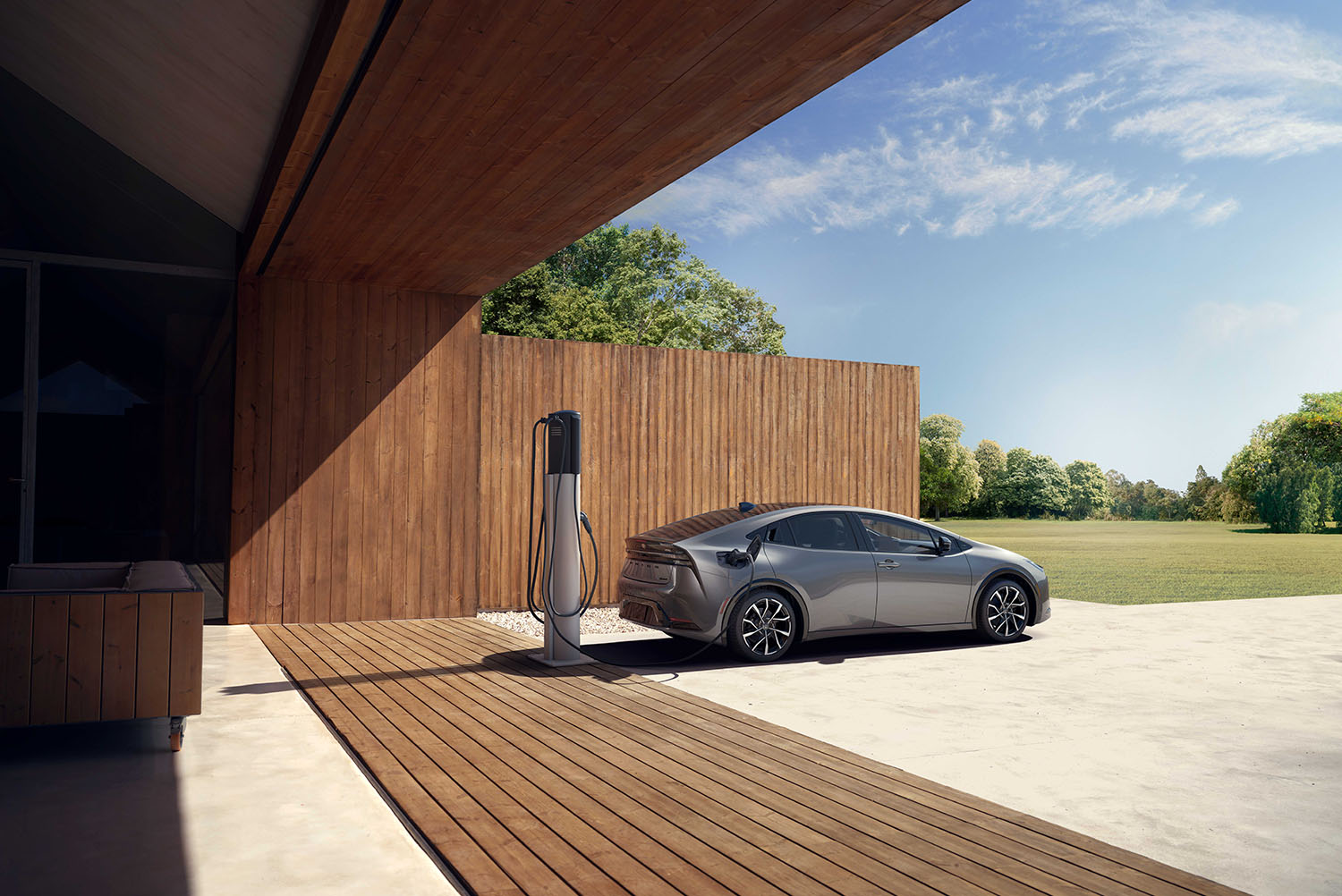Solar Panel Car Roofs: What Do They Do?
Now a fixture on many homes, solar panels are slowly making their way to the automotive world, where carmakers hope they'll provide supplemental electrical charging capacity.
 Toyota
Toyota
Although some automakers have added rooftop-mounted solar panels to their vehicles to boost power, widespread and meaningful solar panel use on automobiles is not yet a reality. Solar panel technology is a cornerstone of renewable energy and works by converting sunlight into electrical power. But most of today's solar panels live on stationary structures like buildings — not cars.
This is in part due to size and available space: Modern solar panels usually range from massive, industrial-sized arrays used by companies to generate electricity on a commercial scale to rooftop panels on houses that provide power for individual homes. By contrast, a car's roof offers a much smaller amount of room for solar panels.
 Toyota
Toyota
Solar Panels Adapted for Automotive Use
To be effective, some home solar power systems can require a roof of panels sized about 5 feet by 3 feet, according to
Still, the automotive industry is moving forward. In 2017, Panasonic announced a 180-watt solar panel roof as an available option on overseas versions of the Toyota Prius Prime hybrid. The panels were intended to help run the car's electric systems and provide a small amount of additional range for the hybrid battery.
In 2020, the Hyundai Sonata Hybrid was another early example of automotive solar technology, with an available solar panel roof for that year's model. The panels were designed to generate as much as 205 watts of power to give the hybrid battery up to 700 extra miles of range per year.
And today, car solar panels are available on the new U.S.-spec version of the 2023 Toyota Prius Prime plug-in hybrid. The panels, which help recharge the battery while the car is at rest and add backup power to its ventilation system when the car is in use, are an option for the top XSE Premium trim level.
 Fisker
Fisker
Are Car Roof Solar Panels Good for EV Charging Needs?
Given their mutual purpose of furthering eco-friendly practices, electric vehicles and solar panels seem as though they should work together seamlessly — a perfect union of technology and ethos. Getting that solar-powered EV charging tech just right, however, has turned out to be quite challenging.
Some companies appear confident that they're on the right track. EV automaker Fisker, for example, has teased that its upcoming Ocean compact SUV — priced around $40,000 — will be able to get about 2,000 miles of range per year from power provided by its SolarSky panels, a solar array covering the vehicle's entire roof.
Other companies, though, have tried and not yet succeeded. Take Toyota's bZ4X electric SUV, which debuted in 2021. The automaker promised a solar roof to help provide some 1,120 miles of charge per year, but early versions of the vehicle were plagued by unrelated mechanical problems that forced a recall. For 2023, the bZ4X does not offer the panels as an option.
Toyota isn't the only carmaker that's struggled. Germany's Sono Motors planned to release its five-door hatchback Sion EV in 2023 with 456 solar cells total on its roof, hood, and trunk to charge the vehicle. But the company's founders were unable to raise enough money for the project, so they will instead aim to offer solar technology to other automakers.
The Lightyear 0, a long-planned Dutch sedan-style EV — priced at almost $260,000 and equipped with solar panels to deliver up to 70 kilometers per day of sun-powered range — suffered a similar fate. Lightyear in 2023 halted production of the 0 shortly after it began, saying it will instead try to offer a more affordable model by 2025.
Written by humans.
Edited by humans.
 Andy Stonehouse
Andy StonehouseAndy Stonehouse literally fell into the world of auto writing while working as a ski-town journalist, and has not looked back since. A childhood spent dealing with the eccentricities of a 1976 MG Midget has made any subsequent auto experience a more safe and reliable drive. He has been blessed with nearby mountain trails and snowy roads in Colorado to do TV-adventure-styled test drives on a weekly basis.
Related articles
View more related articles